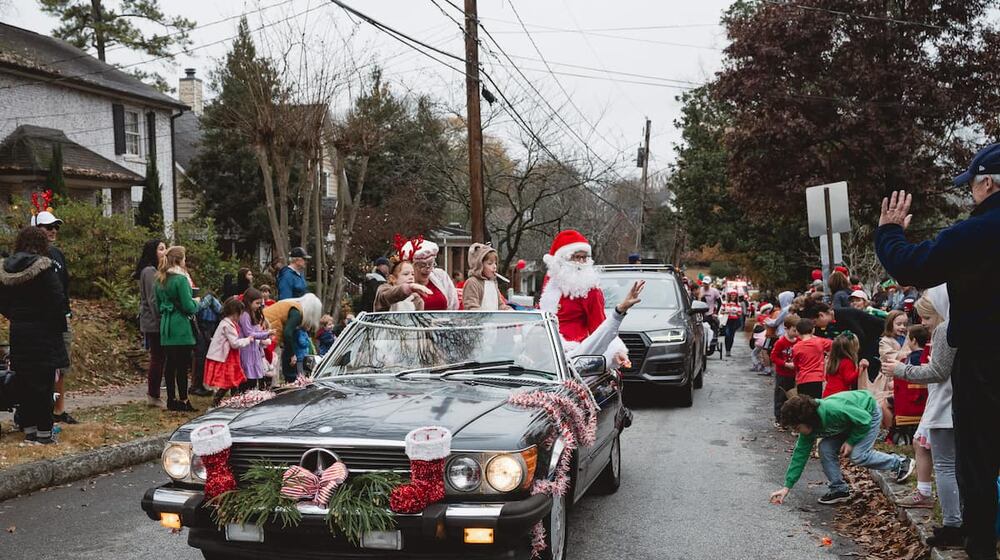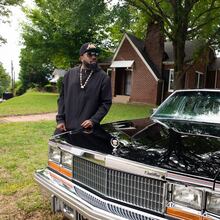One day as the little boy sat with his mother sketching an object with a pencil, Lorenzo Scott found himself in awe of her creation.
That’s pretty, he thought to himself.
Then in another moment more than a decade later, that same wonder took hold of him as he spied pictures in the window of an antique shop along Peachtree Street.
What if we could draw like that, Scott’s brother said to him.
I’m going to paint like that, Scott shot back.
And so he did.
Now at age 80, Scott laughs out loud as he recalls the beginnings of his fascination with the arts during a visit last month in the home of one of the biggest admirers of his work, Jim Farmer, founder of the Lorenzo Scott Project and more recently a foundation of the same name to bring the folk artist to a wider audience.
Although his work has been included in over 60 museum exhibitions, including at Atlanta’s High Museum of Art, and over a dozen books, Scott may be America’s least-known famous artist.
“He’s probably one of the great artists of our time and one of the greatest folk artists by far,” said Steve Slotin, owner of Slotin Folk Art Auction in Buford. “He’s terrific and very important to the field and just doesn’t get enough recognition.”
Farmer, though, is determined to change that.
You might say the retired microbiologist’s quest began in the summer of 1996, when he spied Scott hawking his paintings in the parking lot of an Episcopal church in Virginia-Highland.
Among his pieces were paintings of Mary and Jesus, angels and a little black girl in a white dress.
“Those were the most unusual paintings and frames I’d ever seen,” Farmer recalled.
He talked to Scott about his dream of owning an art gallery for a while and went on his way.
A month later, Farmer returned with his ex-wife, who was immediately smitten.
This time, Scott told them about pieces of his work that hang in the Smithsonian. This time, Farmer bought five paintings, including the little girl in the white dress.
They didn’t believe Scott’s claims about the Smithsonian. Farmer never dreamed he’d one day build a large collection of his work.
“It just happened,” he said.
Trying to find his way
By then, Scott’s talent and determination had taken him far beyond his birthplace of West Point, Ga., but you wouldn’t know it.
Seated at a dinner table in Farmer’s home, surrounded by almost a hundred pieces of his art encased in his signature gold frames, Scott struggled to draw a straight line between the years since he first witnessed his mother sketch, the pictures in the antique shop window and now.
It went something like this.
After dropping out of Walker Street School to get a job, Scott tried to scrape together a living on construction work. In 1964, when he was 30, he headed to New York.
Though he worked jobs here and there and painted in his spare time, he didn’t feel he was making a life in New York. Within a year, he decided to return home, “get me some paint and paint me some pictures.”
He never set out to paint religious art, he said. He simply had no other choice.
“It was like Christ was dealing with me all my life,” Scott said.
Still, he never quite knew what to make of his urging until about 30 years ago. One Sunday while attending church, he said, a voice spoke to him saying, “Witness unto me.”
“It was hard at first, but one day I finally got it going,” Scott said.
A change of fortune
He was working construction by day and painting by night, but he struggled to make ends meet.
He felt sad.
One night, he said, “the good Lord let me know he heard me thinking.”
He felt so good the next day “it was like I was floating.”
“That same day, a man called my home and said, ‘I’ve been looking for you. Can I come to your home to buy some of your paintings?’”
From that day forward, Scott said, “people started buying my art.”
“I wasn’t thinking that I could sell, I didn’t think it was good enough. It was so steady the police thought I was selling drugs, but I was doing just what the Lord told me.”
Farmer, who had never seen a real painting until he left home for college in 1961, was among Scott’s regular customers.
To date, he estimates he’s collected more than 500 pieces of the artist’s work, including paintings, his characteristic gold “Bondo frames” and objects such as painted trunks.
“The goal is to have something like this in a museum where people can see it,” Farmer said.
According to Slotin, who runs the Folk Fest at North Atlanta Trade Center and puts on two folk art auctions annually, Scott’s work is very popular at his events, where smaller pieces sell for several hundred dollars while the bigger ones go for thousands.
The record, Farmer said, is $20,000.
Slotin said Scott’s art is completely original. No one produces work that looks like it.
“He’s able to mix these great iconic images and make them his own,” Slotin said. “He’s touched on everything from the Gulf War to urban unrest. You can’t help but look at his work and go wow. There’s something about it that’s just powerful. It’s everything you want in a folk artist. It’s hard to go through life and have as many people love you and what you do as Lorenzo does. That says a lot about him.”





